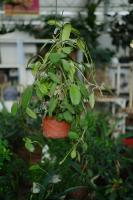Introduction
Do you want to give your plastic plant pots a new look? Painting them is a great solution! By painting your plastic plant pots, you can transform them into stylish and unique additions to your home decor. But what kind of paint should you use? In this article, we'll guide you through the best paints to use for plastic plant pots and how to properly paint them to ensure they last for years to come.
Types of Paints to Use
When it comes to painting plastic plant pots, not all paints are created equal. You'll want to avoid using most regular paints as they won't adhere properly to plastic and will easily peel off. Instead, you'll want to use a paint specifically designed for plastic. Some of the best paints to use for plastic plant pots include acrylic paints, spray paints, and specialized plastic paints such as Krylon Fusion for Plastic.
Preparing Your Plant Pots for Painting
Before you start painting your plastic plant pots, it's essential to prepare them properly to ensure the paint will adhere properly and last. Start by washing the pots thoroughly with soap and water and allowing them to dry completely. Next, lightly sand the surface of the pots using fine-grit sandpaper to help the paint adhere. Then, wipe them down with a damp cloth to remove any dust or debris.
Painting Your Plant Pots
Now it's time to paint your plastic plant pots! Make sure you're working in a well-ventilated area and use a drop cloth or newspaper to protect your work surface. If you're using spray paint, hold the can about 8 inches away from the pot and spray in a sweeping motion. If you're using acrylic paint, apply it with a brush, making sure to apply thin layers and allowing each layer to dry completely before applying the next. You may need to apply several coats of paint to achieve your desired color and coverage. Make sure to follow the manufacturer's instructions for drying times and reapplication.
Sealing Your Painted Plant Pots
To ensure your painted plastic plant pots last, it's essential to seal them properly. You can use a clear acrylic sealer, which will protect the paint from scratches and fading due to sunlight exposure. Simply spray or brush on a thin layer of the sealer and allow it to dry completely. You may need to apply multiple coats depending on the brand of sealer you're using.
Conclusion
In conclusion, painting your plastic plant pots is an easy and fun way to give them a fresh new look. With the right kind of paint and preparation, you can create unique and stylish additions to your home decor that will last for years to come. Just remember to choose the right paint, prepare your pots properly, apply the paint in thin layers, and seal the pots with a clear acrylic sealer.

 how many times do yo...
how many times do yo... how many planted tre...
how many planted tre... how many pine trees ...
how many pine trees ... how many pecan trees...
how many pecan trees... how many plants comp...
how many plants comp... how many plants can ...
how many plants can ... how many plants and ...
how many plants and ... how many pepper plan...
how many pepper plan...
































